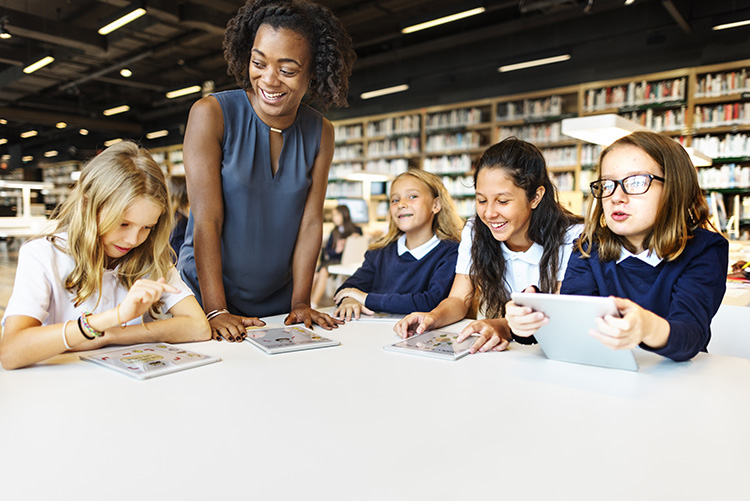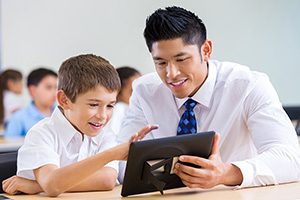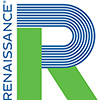
What does the term “digital literacy” mean to you?
The recent NCEA webinar on The Critical Role of Digital Reading in Literacy Growth explored how digital literacy involves much more than just reading books electronically. It encompasses 21st-century skills related to the effective and appropriate use of technology.
The American Library Association (ALA) defines digital literacy as “the ability to use information and communication technologies to find, evaluate, create, and communicate information, requiring both cognitive and technical skills.”
But teaching digital literacy in Catholic schools should encompass more. Students must learn specific skills for making smart choices while reading online text that contains embedded resources such as hyperlinks, audio clips, graphs, or charts.
Students are also being asked to create, collaborate, and share digital content responsibly. For these reasons, Catholic educators are embracing the importance of teaching digital literacy skills in the classroom.
Why reading online is not “digital literacy”
It’s important to note that simply reading online or subscribing to an eBook service does not make a student digitally literate. Online reading can improve reading growth because reading practice—time spent reading—is key to achievement for students at every level. However, essential digital literacy skills go much further than reading digital books.
Why is digital literacy so important?
Catholic educators are focusing on teaching digital literacy skills because today’s students use the Internet as a key source of information. Students must understand the basics of Internet safety such as creating strong passwords, using privacy settings, and knowing what to share or not on social media.
Additionally, nearly every career now requires digital communication, so equipping students with the skills to effectively and responsibly find, evaluate, communicate, and share online content is key to college and career readiness.
You’re likely already teaching digital literacy skills
Chances are you’ve been teaching your students digital literacy basics all along, perhaps without even realizing it. For example, do you teach students how to discern trustworthy sources and recognize fake news versus real news? Do you discuss the consequences of what students share online? If so, you’re teaching digital literacy skills.
Ensuring students become digitally literate encompasses so much that it’s helpful to break down your approach into three key areas: finding and consuming digital content; creating digital content; and communicating or sharing digital content.

Finding and consuming digital content
Students who are becoming digitally literate need to ask important questions about the online content they encounter. Who created the message and why? Where is the message being distributed? Which techniques are being used to attract attention?
They learn to identify dubious claims and slanted viewpoints and to assess the accuracy of charts, graphics, and other data sources. Part of effectively finding and consuming digital content focuses on teaching students to discern facts from misinformation and determine trustworthy sources.
Creating digital content
Students who are gaining digital literacy skills learn to become responsible creators of digital content, including both writing in digital formats and creating other forms of media such as tweets, podcasts, videos, emails, and blogs. Teachers can incorporate digital, in-text tools into instruction, empowering students to become effective content creators, as they also learn to question what others have created and shared.
Communicating or sharing digital content
Since digital writing is often meant to be shared, learning how to effectively collaborate and communicate ideas with others is a pillar of digital literacy. Students don’t always consider the implications of what they share online. In your digital literacy lessons, discuss the consequences of what students share. Help them understand that a digital footprint encompasses all the information they either passively leave or actively share about themselves online, most notably social media sites.
What makes a student-centered digital library different?
Access to diverse reading content is key to helping students build digital literacy skills while also providing opportunities for personalization that lead to reading growth. One way to do this is through a student-centered digital library.
A digital library helps students build literacy skills while also:
- Providing content for a broad range of interests, grades, and reading levels
- Offering a variety of formats and genres including fiction, nonfiction, and graphic novels
- Delivering titles from well-known publishers in both English and Spanish
- Maximizing student choice and engagement
- Allowing many students to read the same book simultaneously
A student-centered digital library helps Catholic educators focus on providing safe, age-appropriate online content that accelerates literacy growth while:
- Giving all students greater access, equity, and ownership of their learning
- Delivering real-time data on digital reading practice to measure growth
Read the Educator’s Guide to a Student-Centered Digital Library to learn more about helping students strengthen both traditional and digital literacy skills by providing equitable access to engaging digital texts.
Sources
American Library Association (ALA) Digital Literacy Task Force (2013). ALA Task Force releases digital literacy recommendations.
Fingal, D. (2017). Infographic: Citizenship in the digital age.
Spicer, B. (2017). Digital Literacy: The New Pillar of a Child’s Education?
About the Author

Renaissance provides research-driven assessment and practice solutions that help educators, students, families, and their communities fuel student growth. Renaissance has been supporting Catholic educators and the Catholic educational mission since 1984 and now proudly serves one-third of the nation’s Catholic schools. For more information, visit www.renaissance.com/catholicschools.
![]()